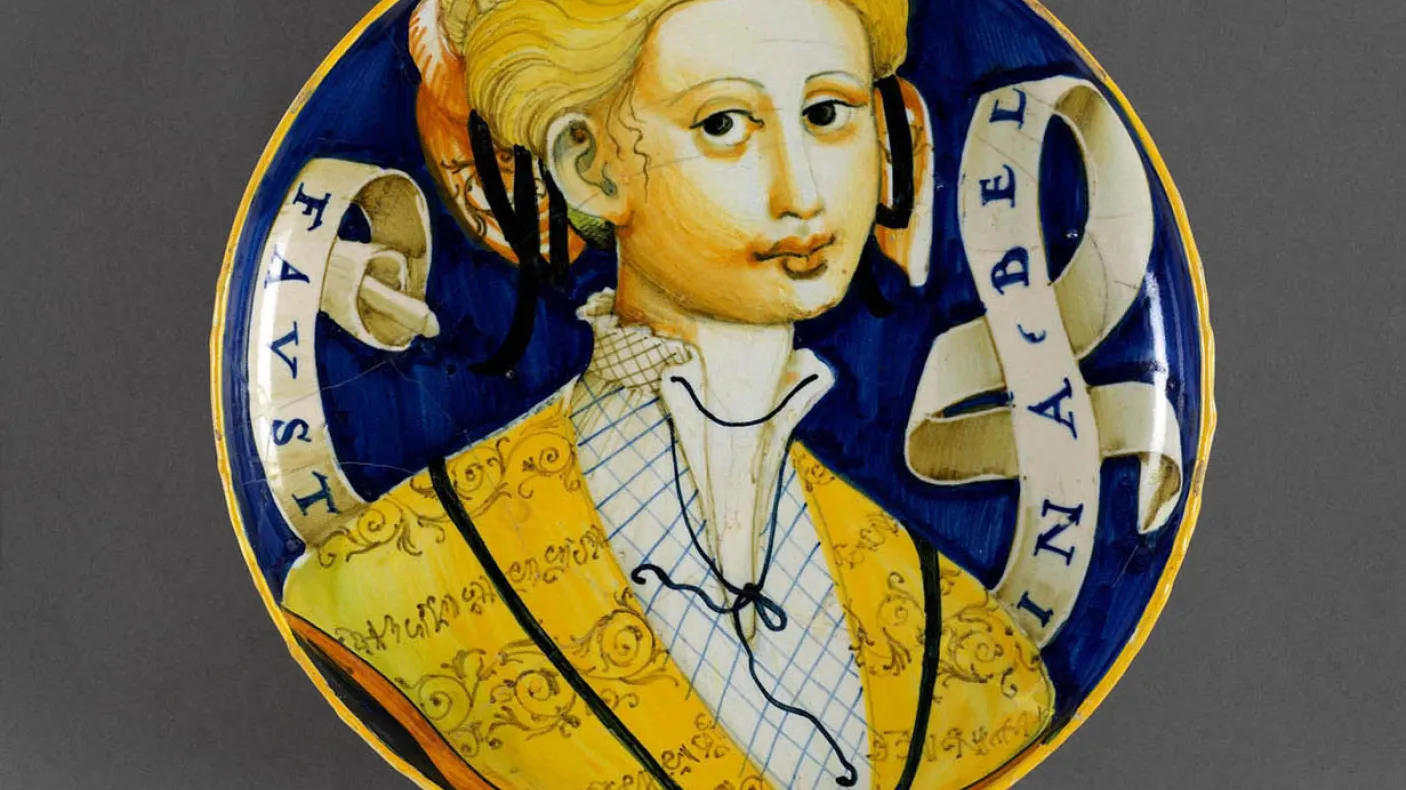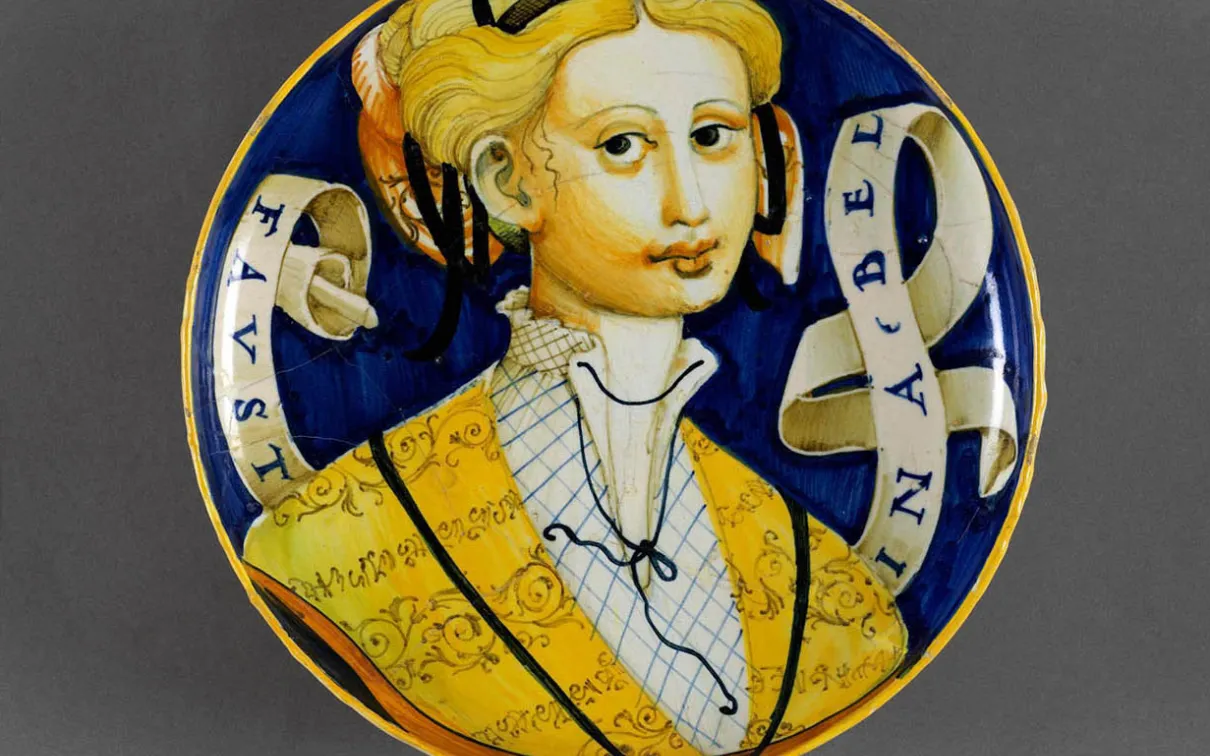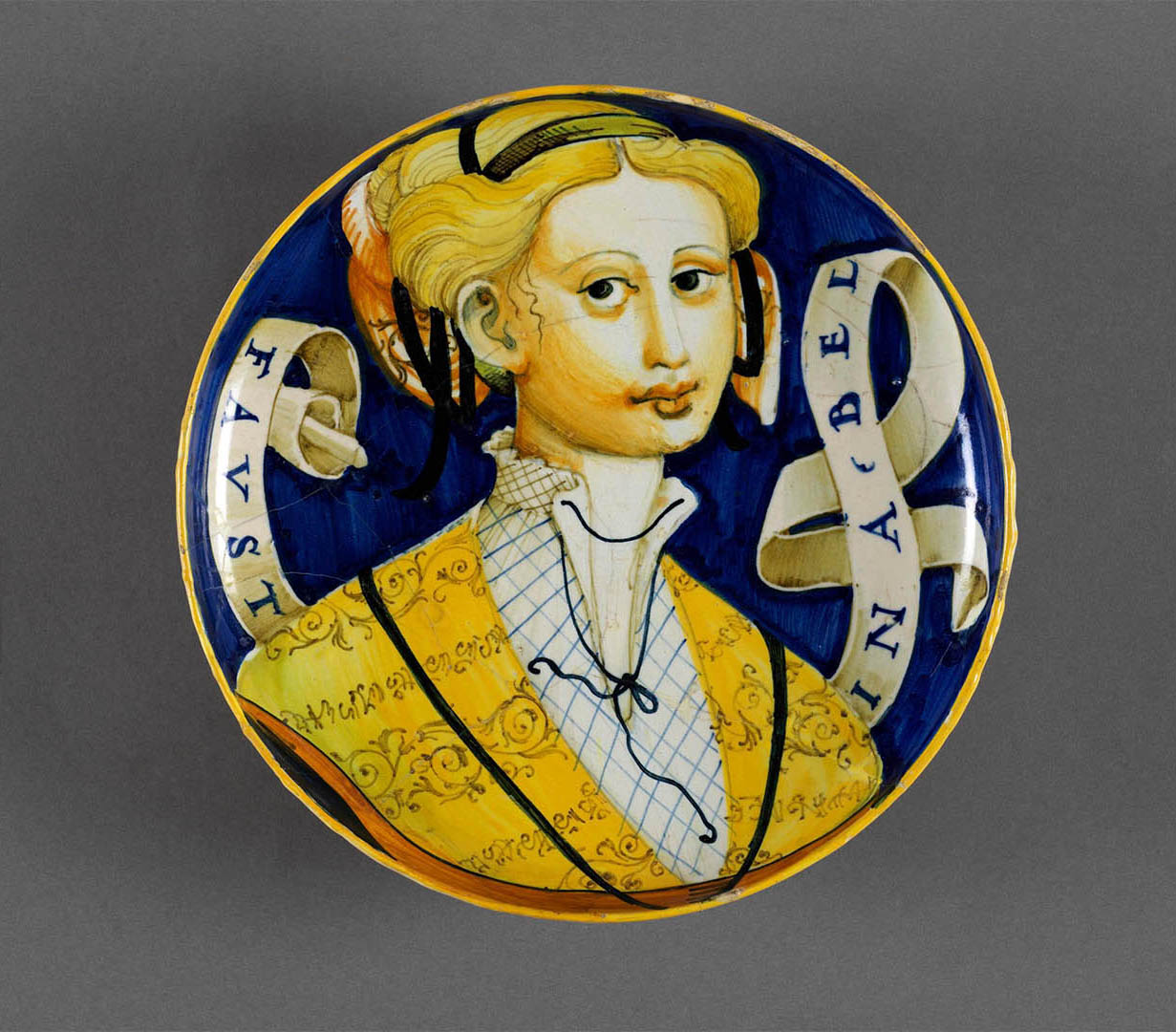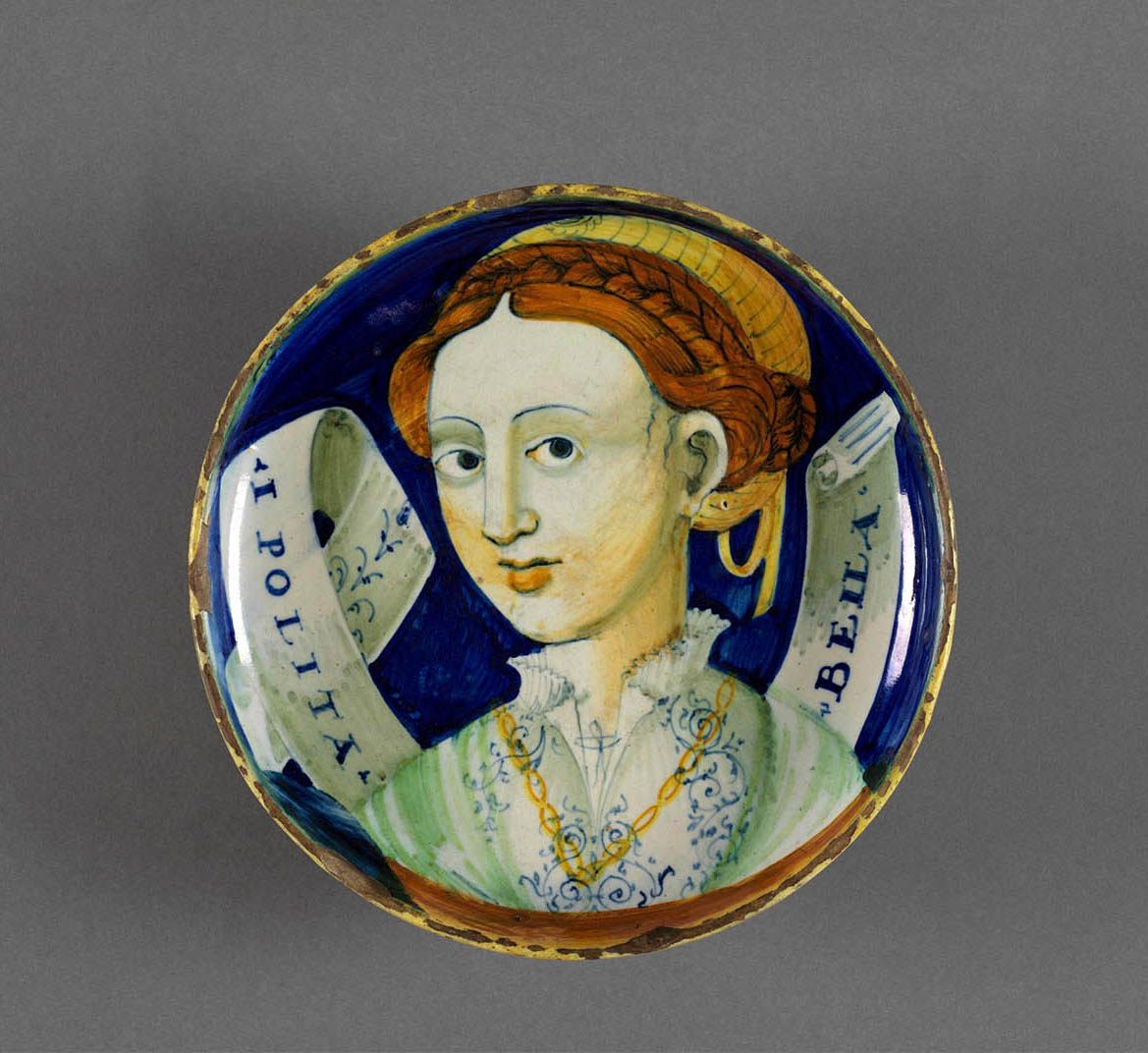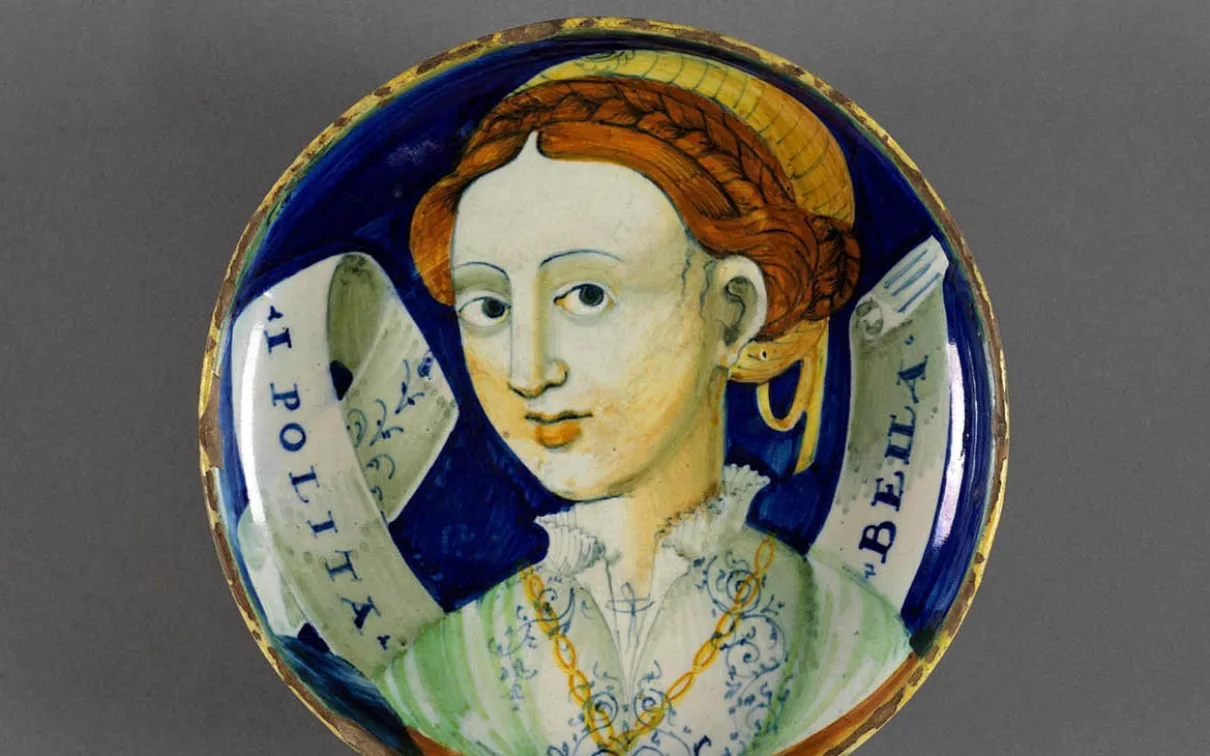Tokens of Love
Published
Categories
Author

Left: Plate (coppa amatoria) (coupe
These two plates, represent a category of maiolica dishes known as a “Belle Donne” (Italian for beautiful women). Between 1520 and 1550, these pieces were widely produced by many prominent Italian pottery centres such as Castle Durante, Deruta, and Urbino.
The dishes depict a female portrait bust with a scroll that bears the inscription of a female sitters' name or motto. On the right is a white banner with the inscription "FAUST" / "INA BEL” (Beautiful Faustina), and on the left is "I POLITA / "BELLA" (Beautiful Polita).
Gallery
Since the 18th century
Since the 18th century, these plates have commonly been referred to as coppa amatoria and represent love gifts that were commissioned by men to give to their beloved. Typically gifted among the wealthy during the Italian Renaissance, the plates played a significant role in courtship practices. The portraits, often idealized, do not necessarily represent a particular woman, but the inscriptions and names are often a direct reference to the women to whom this token of love was gifted.
Jennifer Kinnaird
Jennifer Kinnaird is the European Collection Technician in the Department of Art & Culture at ROM.
